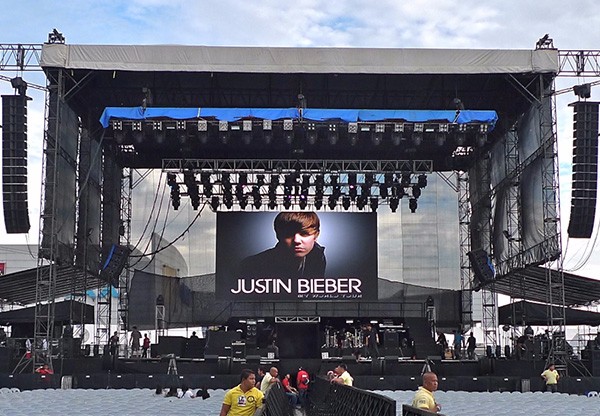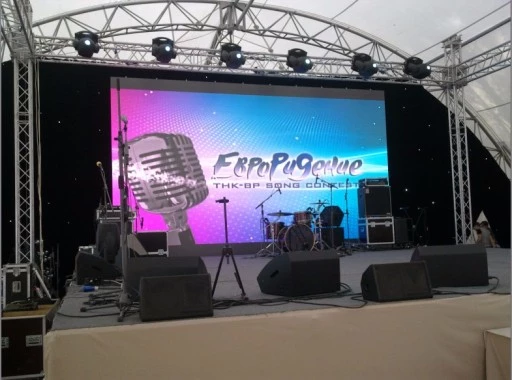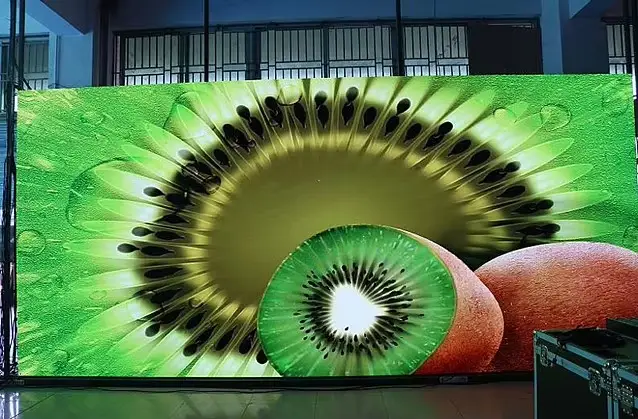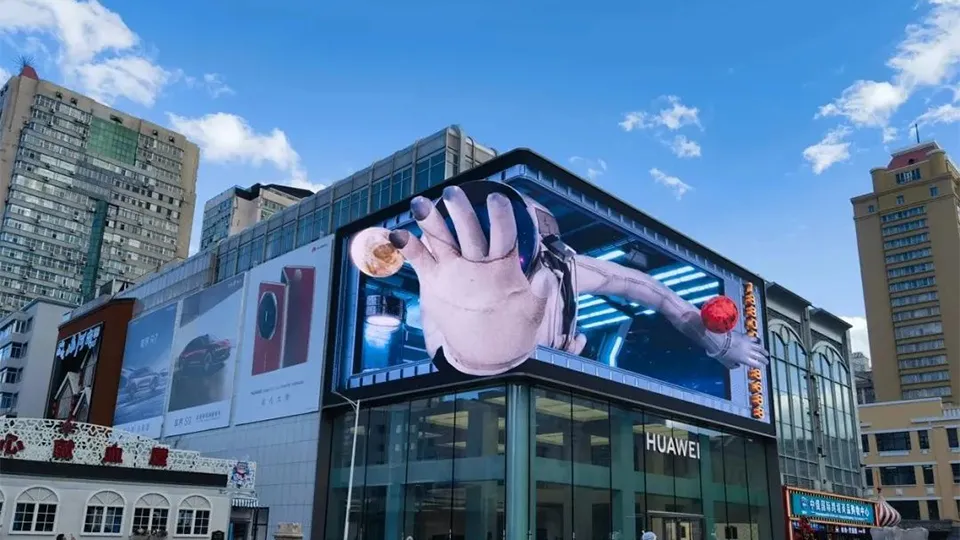
How to change your brand image through customized LED display solutions?
In today’s most dynamic environments, displays aren’t just there to show—they’re there to shape. A digital canvas can define how a space feels, how a brand speaks, and how people remember an experience. From storefronts to transportation hubs, from galleries to venues, a display’s presence must match the place it inhabits. That’s why custom LED displays have moved to the forefront—not for their novelty, but for their ability to bring clarity, intention, and form into perfect alignment.
Unlimited Possibilities with Customized LED Displays
Spaces aren’t made from templates. They bend, stretch, narrow, expand. A high-ceilinged atrium might invite something bold and sculptural, while a tucked-away corner demands subtlety and precision. Custom LED displays work because they respond to the specifics of the space, not the other way around. They become part of the design language, speaking in form and light rather than merely overlaying visuals on a surface.
Off-the-shelf panels, bound by fixed shapes and sizes, often compromise the visual or architectural intent. A custom system does the opposite. It gives designers the freedom to follow the flow of the space—wrapping a column, tracing a curve, hovering with deliberate weightlessness. It doesn’t just fit—it belongs. That’s what makes the difference between a digital screen and a digital experience.
The performance is also entirely configurable. Every technical spec, from pixel pitch to brightness level, is tuned based on context. Indoor or outdoor, close-range or distance viewing, ambient lighting or controlled atmosphere—nothing is assumed. The cabinet depth, structural mounting, and even the division of content zones can all be adapted. One surface may carry branding, another live updates, and another real-time media. The display isn’t just versatile—it’s strategic.
And this flexibility goes beyond appearance. It ensures the entire system is built to serve the idea. When the LED structure enhances the concept instead of interrupting it, the result is not just seamless—it’s memorable. The display and space speak the same language, enabling harmony that amplifies the intended experience without distraction.

Creative Displays That Strengthen Brand Identity
The physical form of a display carries meaning. It frames how we read the content, how we feel about it, and how we recall it later. When people talk about a space they visited, they often describe the shapes, the glow, the symmetry, the interaction—not the words on the screen. This is why custom LED displays are never just functional—they are foundational to identity.
Think of the display as a physical extension of the brand’s visual tone. Shapes, symmetry, rhythm—they all mirror brand attributes. Sharp angles can suggest energy and precision. Smooth curves might hint at innovation or elegance. Color balance, motion timing, and spatial layout each contribute to how viewers emotionally register the display. Each of these elements becomes part of the storytelling.
It’s not about being flashy. Sometimes the most powerful effect comes from subtlety. A flush-mounted LED wall, completely integrated into natural materials, might stay invisible until activated. When it lights up, the contrast between stillness and motion commands attention without shouting. It’s a refined kind of engagement—quiet but unmistakable.
More than just screens, custom LED dispalys become part of a brand’s visual vocabulary. They deliver consistency across locations while adapting to different spatial challenges. When the display feels like it’s speaking the same design language as the brand itself, the message lands deeper—and lingers longer. This continuity fosters recognition, trust, and emotional connection.
Transparent Screens for Modern and Open Spaces
Modern spaces breathe. Natural light pours in. Walls dissolve into glass. And that transparency—so central to how these spaces feel—can make traditional screens look clunky, intrusive, or out of place. That’s where transparent LED displays find their strength. They exist without interrupting. They display without closing off. They allow openness to remain untouched.
These systems offer the rare ability to show content and preserve clarity at the same time. The screen becomes a light-born layer, sitting on glass without blocking what’s behind. Even when running animated visuals or video, the environment remains part of the experience. It’s light on light, not light against wall. It’s media that participates, not media that dominates.
In settings where natural sightlines are crucial—showrooms, terminals, atriums—this technology thrives. And it adapts with the same level of custom configuration as other LED solutions. Modular grids flex to architectural shapes. Brightness shifts with daylight levels. Installation methods respect material limitations, ensuring that visual impact doesn’t come at the cost of structural harmony.
Advantages of transparent LED displays:
- Up to 70% transparency without blocking views
- Lightweight panels suitable for glass facades
- Minimal visual obstruction when inactive
- Adaptable brightness for sunlit environments
The result is a new type of communication—one that doesn’t interrupt space but inhabits it with care. Content becomes part of the air, part of the view. That kind of experience isn’t easy to achieve with traditional displays, which is why transparency is becoming an architectural choice as much as a technological one.

Flexible Installation for Diverse Applications
Design freedom is only as powerful as the practicality that supports it. A bold LED installation means little if it can’t be safely installed, easily accessed, or reliably maintained. That’s why flexibility isn’t just a matter of screen shape—it’s a core principle of how custom LED systems are designed, built, and serviced.
Every site has its constraints. Some offer ceiling mounts, others only have side access. Some have room behind the wall, others require flush-front servicing. Custom systems take all of this into account during the design phase—not as adjustments after the fact, but as central inputs to the engineering.
Modular cabinets simplify both assembly and disassembly. Front-service access ensures minimal disruption during maintenance. Wiring paths are planned for invisibility, and cable runs are placed strategically so that future expansion or repairs won’t require rework. It’s not just about how a display looks when it’s on—it’s about how it performs day after day, month after month, without complication.
Typical installation factors to consider:
- Load-bearing limits for walls or suspended systems
- Accessibility for inspection, cleaning, or part replacement
- Cable routing without interfering with airflow or finishes
- Power supply redundancy for 24/7 operation environments
System control is equally customizable. Displays can be zoned, timed, synchronized, or operated independently—all within the same installation. Whether the goal is a seamless visual across a single surface or multiple coordinated zones across floors, the display adapts to the strategy. Even when working across curved or multi-dimensional layouts, content logic remains clear and responsive.

Expert Support from Concept to Completion
The installation is the moment everyone sees—but what happens before and after is where success is defined. A truly effective custom LED display isn’t just a product. It’s the result of careful planning, sharp engineering, and committed support. These systems require people who understand how physical space meets digital strategy.
That support begins before any pixels light up. It starts with questions: What’s the lighting profile throughout the day? How far will viewers stand from the display? What kind of surfaces will it attach to? How will airflow be managed? How often will the content change? These questions inform everything—from structure to wiring to media playback setup.
The technical team doesn’t just follow instructions—they model solutions. They map weight loads. They build cable layouts. They ensure that thermal design is in place before the first component arrives. It’s not uncommon for teams to simulate color calibration and brightness gradients to match the actual surfaces the display will be embedded in. These extra steps prevent problems down the line.
Even post-installation, the process doesn’t end. Support teams handle firmware updates, monitor performance, and respond when things need fine-tuning. Clients aren’t left with a static system—they have a living one, designed to adapt as needs evolve. True support means being there long after the grand reveal, making sure the system works as expected every time it matters most.
When projects succeed, it’s not because one thing went right—it’s because a hundred small things were thought through from the start. That depth of coordination is what transforms a screen into a system.

3D10
Conclusion
Generic screens fade into the background. Custom LED displays do the opposite—they make a space speak. Whether stretching across the ceiling of a flagship store or floating within a sheet of glass in a transit terminal, a well-designed display elevates both the message and the medium. It doesn’t distract—it defines. And when every detail aligns, the result isn’t just seen—it’s remembered.